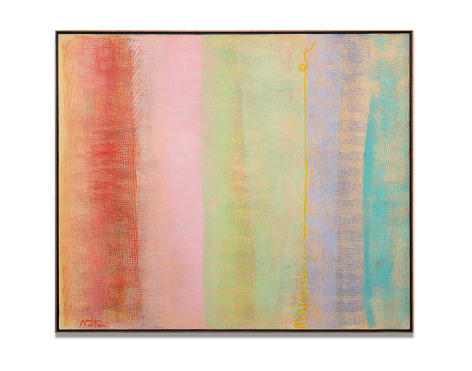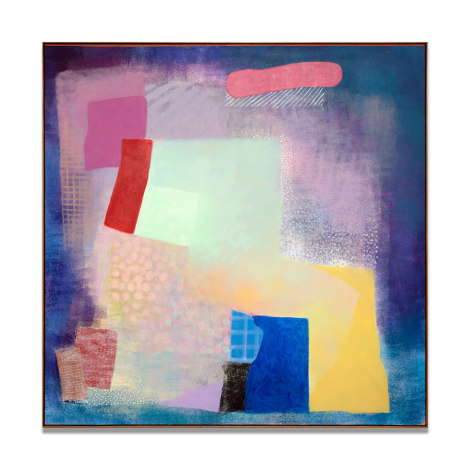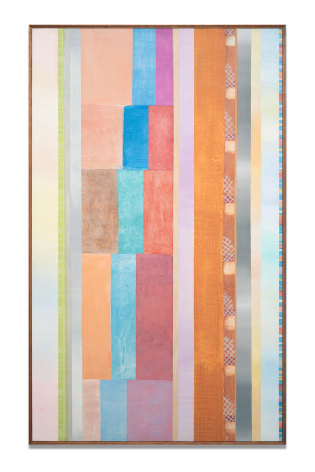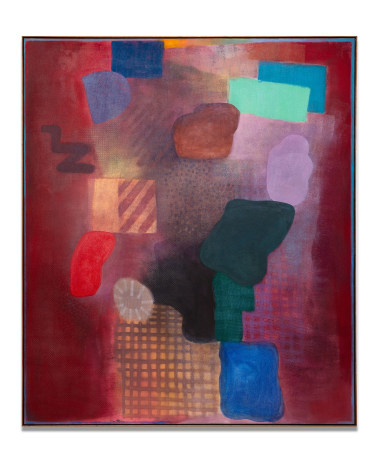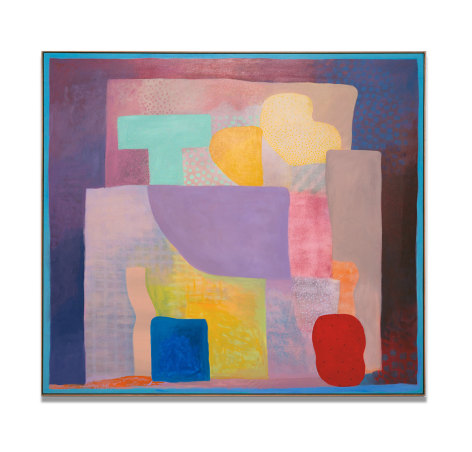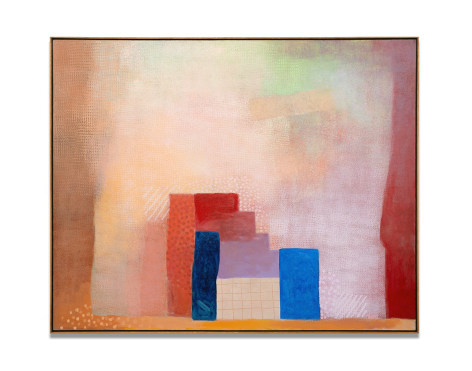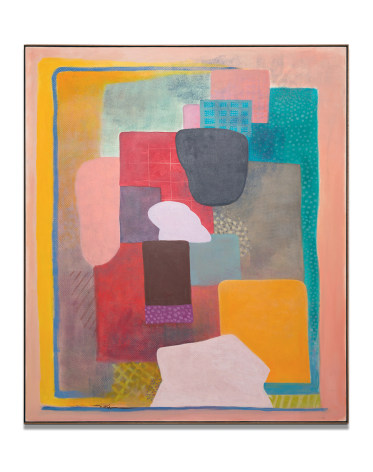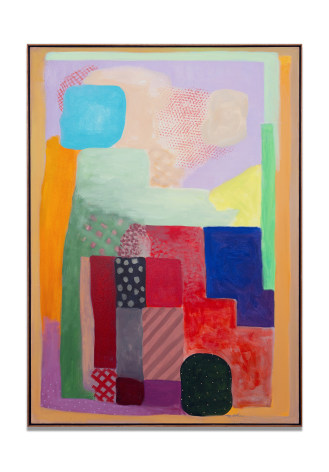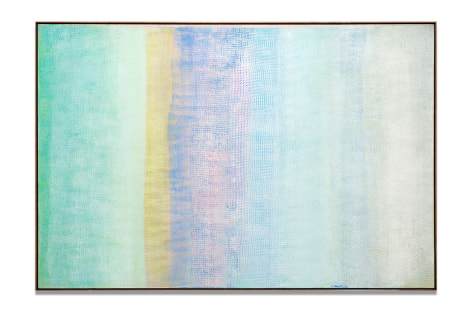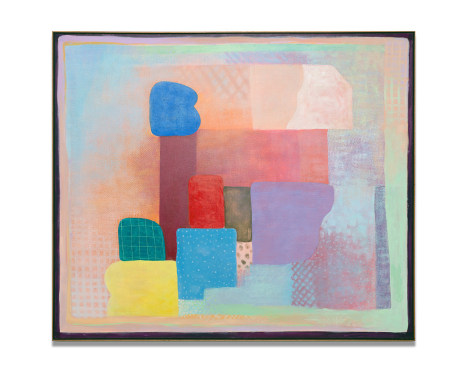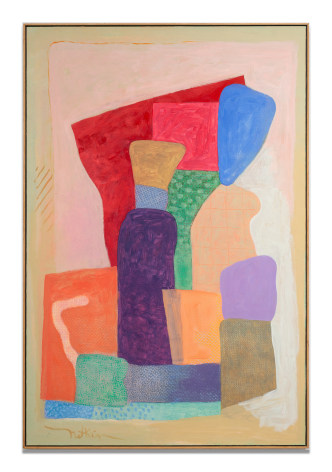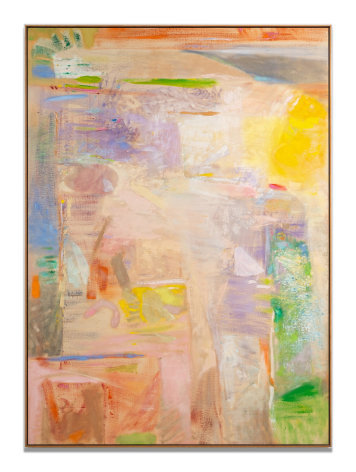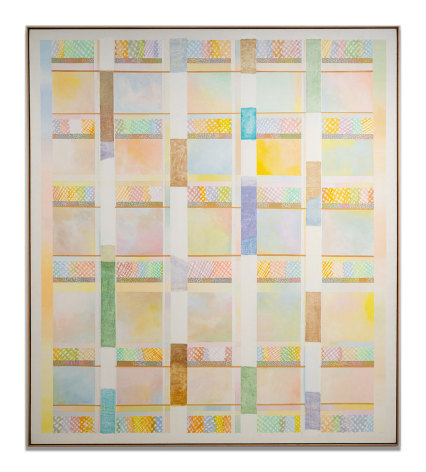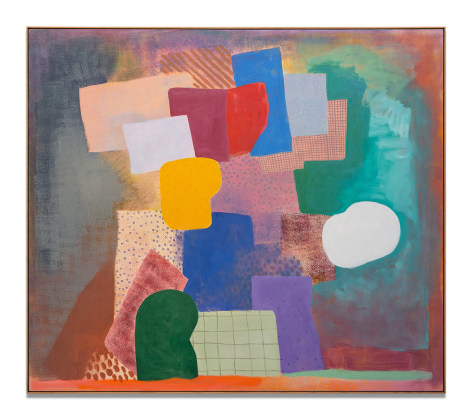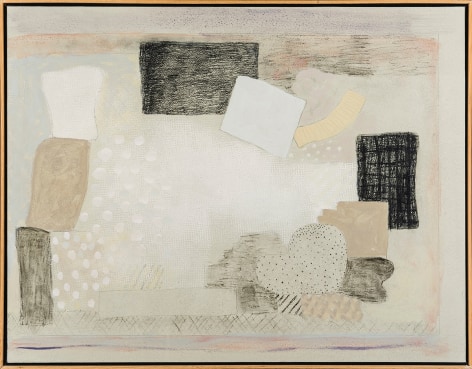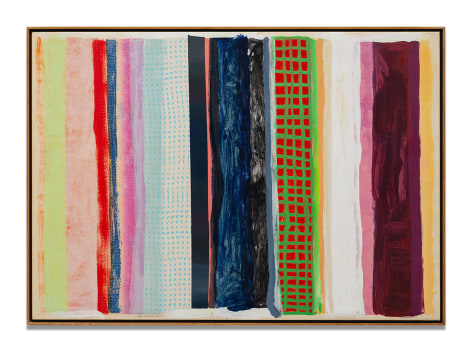Sundaram Tagore Gallery is pleased to represent the estate of Robert Natkin (1930–2010) worldwide.
Celebrated as an unsurpassed colorist and for the beauty of his large-scale abstract works, Robert Natkin was a Chicago-born artist associated with the Color Field and Lyrical Abstraction painters. His hues are shamelessly seductive, whether deployed in vertical columns in his Apollo paintings, spread in gauzy veils in his Bath series, or strikingly textured in the Bern pictures. On his canvases, paint creates a seemingly infinite space in which iconographic details appear to hover or float through illusory depths.
Robert Natkin was born in the midst of the Great Depression, into an impoverished Russian-Jewish family. When Natkin was a teenager, the family moved from Chicago to Oak Ridge, Tennessee, where his father obtained a job that paid enough to provide some stability. He had thoughts of becoming a commercial illustrator, but on encountering a book about Paul Klee he knew immediately that he wanted to be a painter.
In 1948 Natkin enrolled in the Art Institute of Chicago. Two professors were particularly influential. Kathleen Blackshear encouraged students to widen their appreciation of non-European cultures, suggesting they acquaint themselves with the ornamentation of Chicago’s architecture and visit the Field Museum to see the Peruvian textiles and other Indigenous art. Isobel Steele MacKinnon, on the other hand, favored the traditions of European fine art. Natkin embraced the ideas of both.
After leaving school in the early 1950s, he was briefly involved with a group of postwar artists based in Chicago nicknamed the “Monster Roster,” which included Neo-Expressionist painters such as Leon Golub. “The first artists that I was drawn to,” Natkin recalled, “were people like Edvard Munch, Rouault, Soutine, Kokoschka, people devouring their own hands.” When their work was shown in Chicago, he discovered de Kooning, Diebenkorn and Rothko, whose paintings particularly moved him.
The artist and his wife, painter Judith Dolnick, moved to New York in 1959. Fearing the disordered, insecure existence he’d known in childhood, Natkin kept his distance from other artists, particularly the Abstract Expressionists whose fabled self-destructive behavior unsettled him. For Natkin, art represented the means to psychological fulfillment and a secure middle-class life. So in 1960, he left the downtown art scene for Manhattan’s Upper West Side. He was painting almost compulsively, and within the year found himself part of the Young America show at the Whitney Museum of American Art, and in 1969 had a retrospective at the San Francisco Museum of Art (now known as the San Francisco Museum of Modern Art). The following year, Natkin and Dolnick moved to Redding, Connecticut, where he built a studio overlooking the countryside and over the ensuing forty years continued to experiment with color and form.
Since 1957, Natkin’s work has been widely exhibited in museums and galleries in the United States and Europe. He had solo shows at the San Francisco Museum of Art, now known as the San Francisco Museum of Modern Art (1969); The Art Institute of Chicago (1975); the Hirshhorn Museum and Sculpture Garden, Washington, DC (1981); and The Aldrich Contemporary Art Museum, Ridgefield, Connecticut (1982). His work was featured in numerous group exhibitions, including at the Whitney Museum of American Art (1960), the Solomon R. Guggenheim Museum (1973, 1974, 1975, 1977, 1979 and 1980), and The Jewish Museum, New York (1982). During the 1970s he had five solo exhibitions at the esteemed André Emmerich Gallery, New York. In 1981, Harry N. Abrams published Robert Natkin, a lavishly illustrated 360-page monograph with text by noted British art critic Peter Fuller.
Robert Natkin’s work can be found in the collections of The Museum of Modern Art, Brooklyn Museum, Solomon R. Guggenheim Museum, and Whitney Museum of American Art, New York; the Los Angeles County Museum of Art; the Hirshhorn Museum and Sculpture Garden; the Carnegie Museum of Art and Carnegie Institute, Pittsburgh; the Museum of Fine Arts, Houston; the Art Institute of Chicago; and the Centre Pompidou, Paris, among others.
His impressive murals—one commissioned by Baxter Laboratories in Chicago (1975), another by the Millennium Hotel in New York City (1992) where it hangs in the lobby, and the best known, a 20-by-42 foot-work in the lobby of 1211 Avenue of the Americas at Rockefeller Center (1991)—have been enjoyed by millions.

